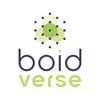From Words to Image: How Algorithms Transform Text into Visual Art.

Artificial intelligence (AI) is revolutionizing multiple industries, and one of the areas where its impact is strongly felt is in the creation of visual art from text. This advancement, driven by powerful machine learning algorithms, allows phrases, descriptions, or even abstract ideas to be transformed into detailed and unique images. But how do algorithms manage to convert words into visual art? In this article, we explore how this technology works and some examples of its practical use.
How Does Text-to-Image Conversion Work?
The creation of images from text is based on AI models known as generative models, which learn patterns and relationships between data to produce new images based on textual instructions. The process generally follows these steps:
- Training the AI: AI models are trained with large amounts of data, typically collections of images labeled with textual descriptions. By analyzing these pairs of images and text, the AI learns to recognize patterns in the descriptions and how these patterns relate to the visual elements of an image.
- Generation from Text: Once the model is trained, the user provides a text prompt (a description or an idea). The AI model interprets this text and transforms it into a visual representation through a process called generative diffusion. This technique starts with a noise image (similar to static on a television) and iteratively adjusts the pixels based on the provided text until a coherent image appears.
- Optimization and Refinement: After generating the image, the AI can make adjustments to enhance visual coherence and align with user expectations. This is achieved through advanced models like CLIP (Contrastive Language-Image Pre-training), which optimize the relationship between text and image to ensure the final output is as accurate as possible.
Practical Examples of Text-to-Image Use
The ability to transform text into visual art has practical applications across various sectors:
- Design and Marketing: Companies can use AI image generators to create customized visual content for advertising campaigns. For instance, a marketing team can describe a desired advertisement, and the AI generates several visual versions that reflect the key words of the message, saving time in the design process.
- Illustration and Artistic Creation: Digital artists can input detailed descriptions of scenes, characters, or concepts, and the AI provides them with base images or complete illustrations. This accelerates the creation process and allows exploration of new artistic ideas without needing advanced drawing skills.
- Video Game Development and Virtual Worlds: In video game development, creators can describe environments or characters, and the AI generates visual representations that can later be refined. This is useful for rapid prototyping and the creation of vast visual worlds without the manual effort that traditionally required.
- Education and Visual Learning: AI models can also be used in education, where teachers can input concepts or historical events and obtain images that visually represent those topics. This enhances student understanding and retention.
Most Used AI Models for Text-to-Image Conversion
Currently, there are several advanced models leading the creation of images from text, such as:
- DALL·E: Created by OpenAI, this model has gained popularity due to its ability to generate highly detailed and creative images from textual descriptions. Its name comes from a combination of Salvador Dalí and WALL·E, reflecting the fusion of art and technology.
- Stable Diffusion: This is one of the most popular models for creating images from text, known for its versatility and ability to generate high-quality images across various applications, from art to graphic design.
- Midjourney: Specialized in creating artistic and uniquely styled images, Midjourney is a popular choice among creatives and designers seeking eye-catching visual results.
The Future of AI-Generated Art
The technology behind text-to-image conversion is continually evolving. As algorithms become more advanced, the generated images are increasingly detailed, accurate, and impressive. In the future, we may see deeper integration of these tools into creative workflows, allowing individuals without technical experience to generate professional art in seconds.
Additionally, the possibilities for customization will continue to grow, enabling users to have even greater control over the style and details of the generated images. From fashion to architecture, this technology has the potential to transform how we conceive of art and design.
The conversion of text to image through AI is breaking creative barriers, allowing anyone—from developers to artists—to generate visual content without limits. Thanks to sophisticated algorithms, it is now possible to describe an idea and watch it transform into art in a matter of seconds. The future of digital art is bright, and AI is at the forefront of this exciting transformation.

